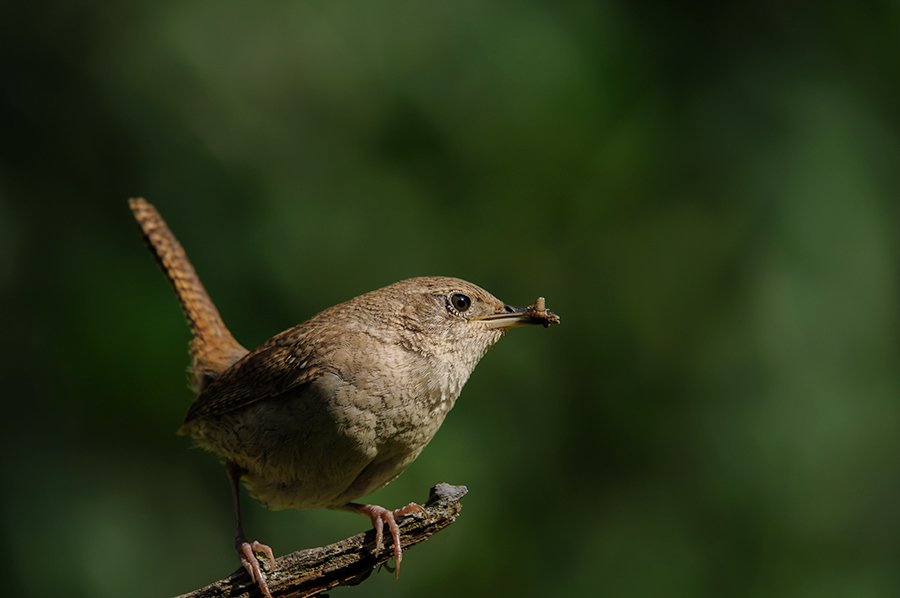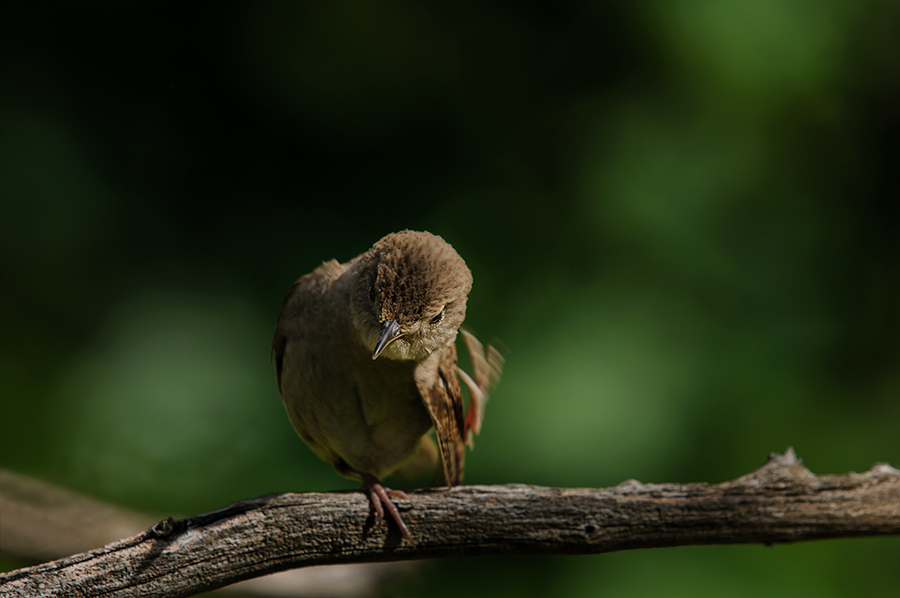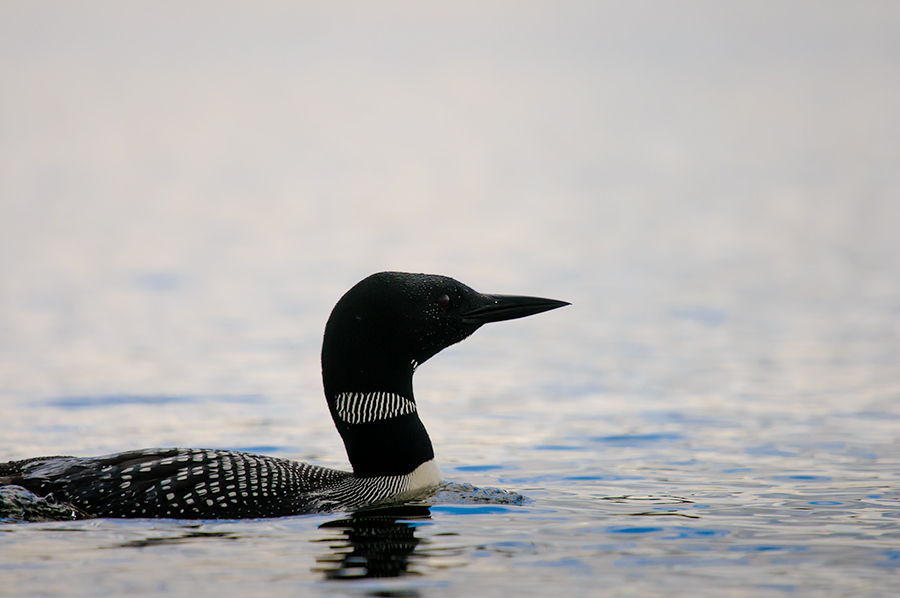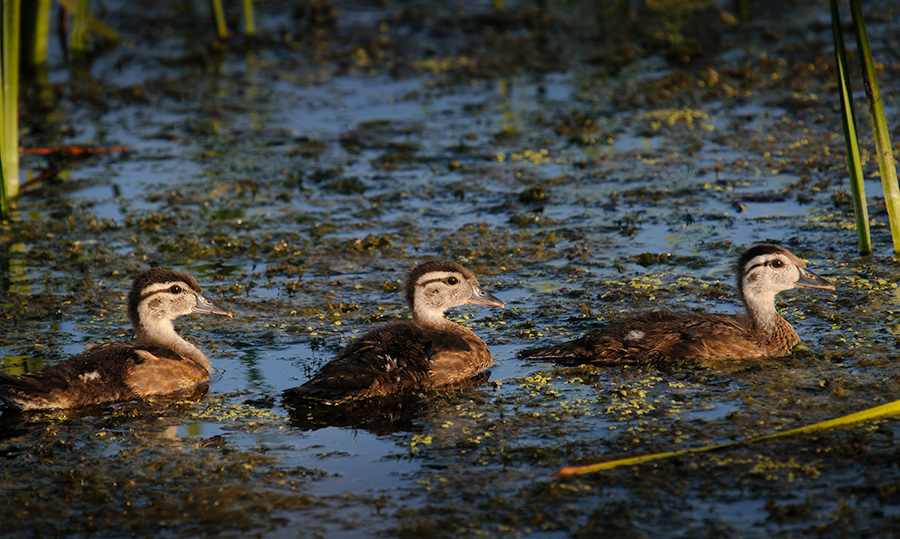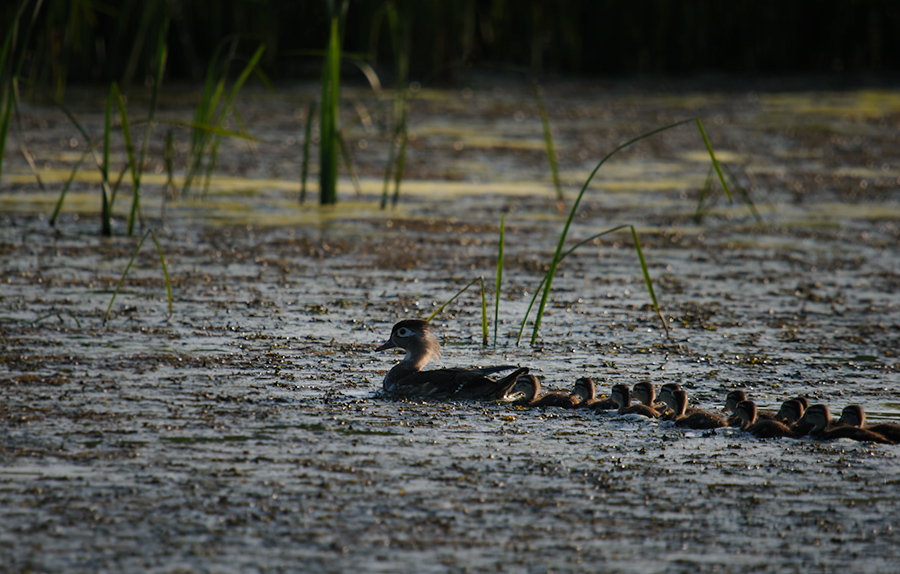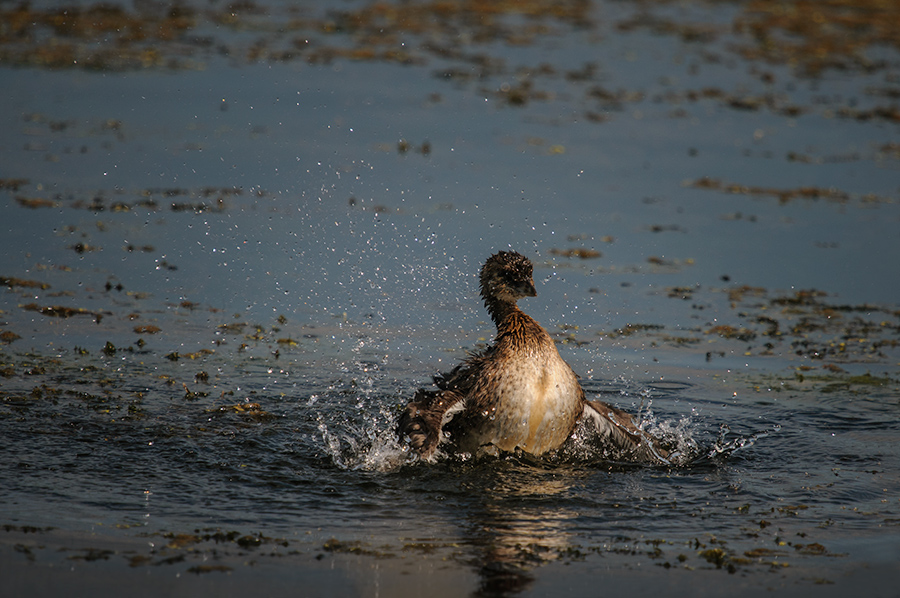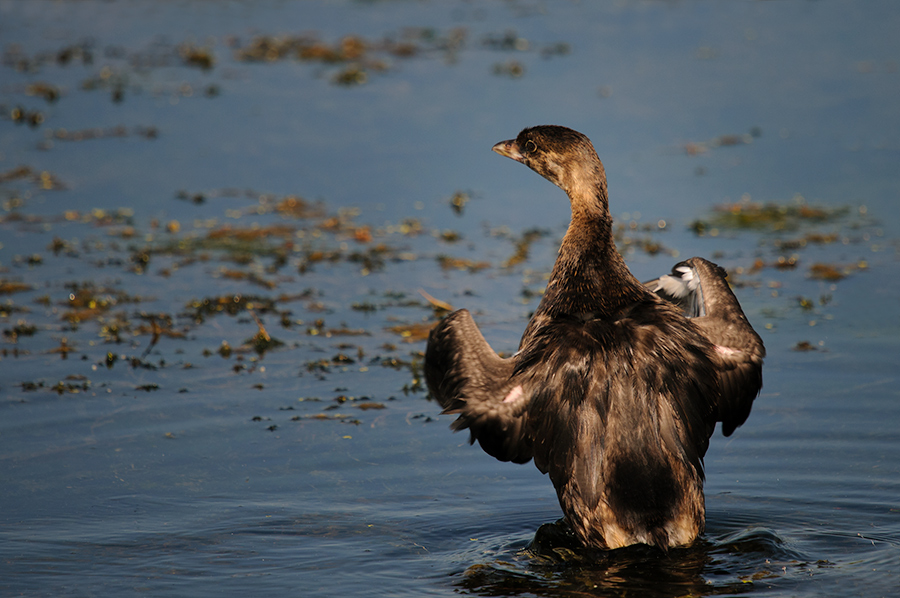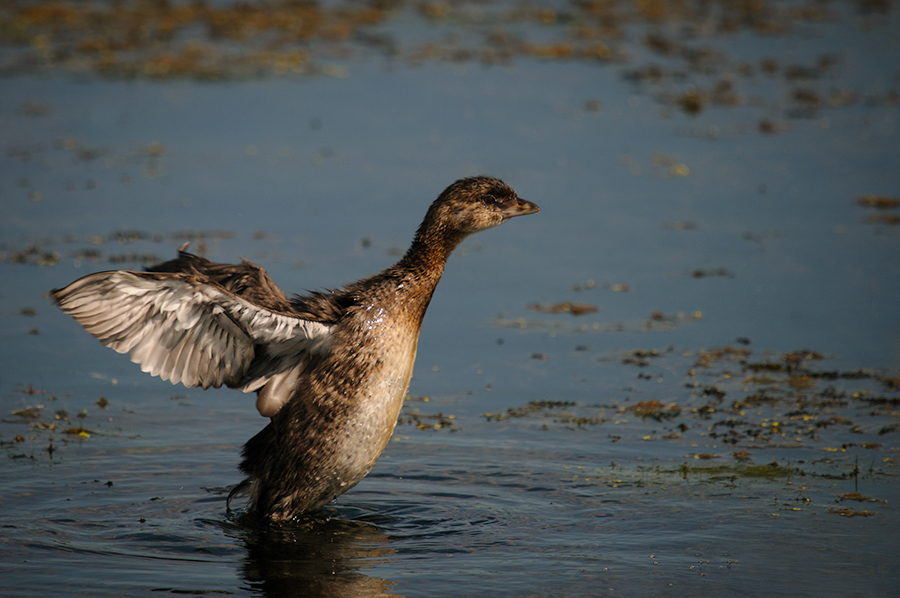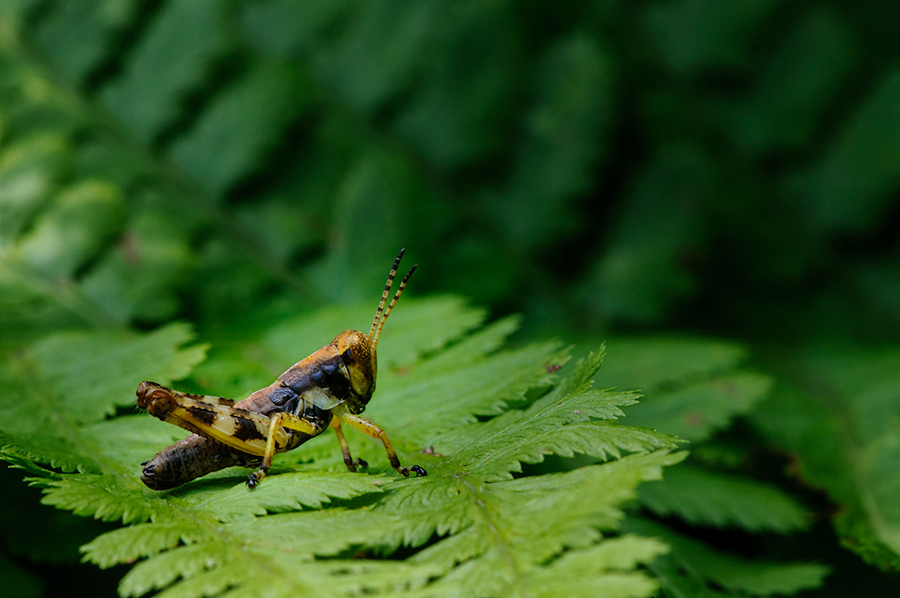
I'm glad I made these pictures yesterday because today the young wrens left the nest in the gourd that is hanging from our porch. We didn't know how many young House Wrens were in the nest until I saw three little birds today. They were sitting together in another bird's nest that is hidden in a bush just a few yards away from the house. The parents had obviously called them out one after another and gathered them with them in the new place. I believe the nest belongs to the Chipping Sparrows that have raised their offspring and are seen now in the grass teaching them how to catch a bug. The wrens didn't stay very long in this place. A few minutes after I saw them in the second nest they had moved already on and we could hear them chatter somewhere in the woods nearby. We wish them save travels and hope to see some of them next year in late April or early May again. They might be here still for a little while but usually we don't see them again after the second brood left the nest.

Let's talk about the photos I show you toady. The first one doesn't need much explanation. Two of the three young wrens sticked their heads out, waiting for food (the third one was probably pushed to the back by the more powerful siblings) and seeing them with their bills closed was a rare moment. They made a lot of noise yesterday and again this morning right after sunrise. The parents came very frequently with new food and it was a joy for me to capture those moments.

My wildlife photography has a lot to do with showing the beauty of wild living animals but the avid reader of my blog knows that I always try to shed some light on some interesting biological facts about the animals I photograph. I have cleaned many bird houses after the breeding season in the past and it always impressed me how clean they are inside. You don't find much dirt beside the branches and grass of the nest. The wrens remove their excrements instantly and I'm sure other birds do too in order to keep the place healthy. And here is how it works. Raising three, four, or even more young birds requires a lot of insects to be caught and fed to the offspring. The last two pictures are shot within a few seconds. The young bird receives its meal, swallows, turns around immediately, and hangs its butt out of the hole of the nest box. The parent bird picks up the digested food from the backside and flies away with it. When the wrens are very young this happens obviously inside the nest box and we can't see it but we always see the parent birds coming out of the hole with trash. I also saw sometimes the young bird giving the excrements to the parents with its bill. This might not be the most pleasent thing to see for some people but I believe it is very interesting. Being intimate with a critter's biology is essential for making the click at the right moment or to predict when the action may happen that you are waiting for. This includes that someone shows you their butt sometimes... ;-)


